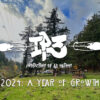|
Getting your Trinity Audio player ready...
|
At a recent gathering in San Cristóbal de las Casas, Chiapas, the southern most state of Mexico, Indigenous Peoples Power Project came together in ceremony with Indigenous activists and thought leaders across the globe to discuss Autonomous Social Movements, Collective Heath, Food Sovereignty, Indigenous Languages, Healing Economies, Identities and a variety of other topics as a means to connect and reconnect for Indigenous liberation. It was a first for many of us to travel internationally, and while I can’t say we were surprised by the lingering conditions after nearly five-hundred years of Spanish colonial rule, what was most disturbing was the lasting impact on Indigenous communities of the region. Founded in 1528 during the European colonial era, by Diego de Mazariegos, the city became the center of oppression and racism towards indigenous peoples who have been considered outsiders in their own lands, effects of which can be felt and seen even centuries later. Of the roughly quarter of a million people in the city according to a 2020 population and housing census, 33 percent are Indigenous Tzotzil and Tzeltal (the largest Indigenous population in Mexico), 84% of them live in poverty, and children are most vulnerable to human trafficking and organized crime. As we see in Indigenous communities across the world, the Tzotzil and Tzeltal are among the first impacted by water exploitation, and you might be surprised to learn that children as young as 6 months drink more Coca Cola than fresh water. Let that sink in.
Passing through Mexico City on our way from the gathering, I was in awe of just how massive this city was from my window seat as we flew in for a 13 hour layover. The sun had long since set and city lights could be seen as far as the eye could see. As we exited the plane and caught a taxi to our hotel for a short stay, the rush hour like traffic at midnight and smell of raw sewage permeating through the city were impossible to ignore. It got me to thinking, what had happened here to cause these conditions, and what was going on underneath this city to exacerbate the sanitation, air pollution, and water crisis? I can’t say that what I’d uncover was a surprise, but yet another reminder that shit happens when we rely on inferior colonial systems and infrastructures. Currently, Mexico City is North America’s largest city with a population of 22 million plus, and was previously the center of the Aztec empire called Tenochtitlan, a city built amid small plots of lake filled in with debris, pottery and soil to create solid land. By the year 1427, the Aztecs built a shining capital city that was marveled by many for its causeways, removable bridges and beautiful engineering. While this great city wasn’t without its challenges, the Aztecs managed it well to create a great diversity in plants and animals, and an agricultural system where land was replenished with soil dredged from the lake bottom. They could have never known that less than one hundred years later their beautiful Indigenous city would lay in shambles at the bottom of the lake.
By 1521, the urban management systems practiced by the Aztecs were ended by Spanish conquest, and the great city of Tenochtitlan was destroyed. The Spaniards had no understanding of the watery rich ecology of the land and arrogantly believed Aztec engineering was inferior. To make way for their new capital city on these stolen lands, the Spanish ignorantly drained the lake and the ignorance remains. This strategy led to both drought and an inadequate water supply for most of the year while the rainy season, however, brought tremendous floods. Heavy rains turned parts of the city into cesspools, spawning waterborne diseases like cholera and malaria, as well as meningitis. Gastrointestinal illnesses festered, too, because residents used Mexico City’s rivers for dumping garbage and sewage. Human and animal bodies floated in the stagnant waters, emitting a terrible stench. In 1810, Mexico gained their independence from Spain, and by 1890 city leaders decided to channel flood waters and sewage away from the city with a thirty mile drainage channel. By 1938, residents of Mexico City were using these polluted waterways as garbage pits and sewers, and it was later proposed to cover these rivers to prevent flooding, disease, and death. By 1952, most of Mexico City’s 45 rivers were channeled into giant tubes, buried, paved over, and the only remnants of the great Aztec city and its waterways are in its Spanish colonial street names. In 2023, Mexico City, San Cristóbal de las Casas, and the majority of Mexican residents are without fresh water. This is why WE OUT HERE…

Nic Sanford Belgard
Indigenous Peoples Power Project









